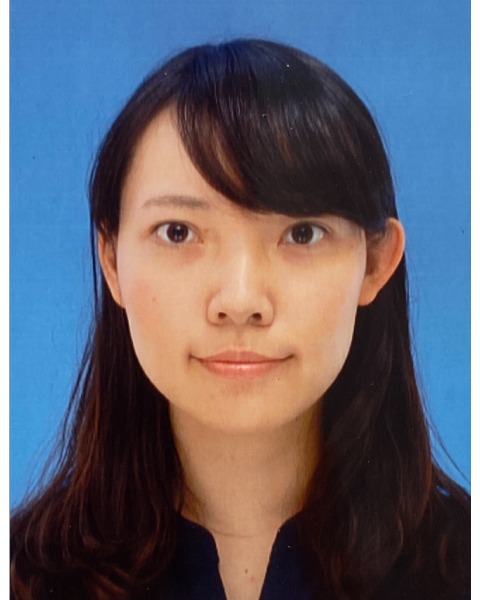Infectious Diseases
Category: Abstract Submission
Infectious Diseases: Respiratory Viruses
588 - Viral loads of parainfluenza virus type 3 and severity of respiratory diseases in children
Monday, April 25, 2022
3:30 PM - 6:00 PM US MT
Poster Number: 588
Publication Number: 588.417
Publication Number: 588.417
Mami Ichinose, Tokyo Metropolitan Childen's Medical Center, Fuchu, Tokyo, Japan; Meiwa Shibata, Division of Infectious Diseases, Tokyo Metropolitan Children's Medical Center, Fuchu, Tokyo, Japan; Keiko Soneda, Tokyo Metropolitan Children's Medical Center, Fuchusi, Tokyo, Japan; Kazue Kinoshita, Tokyo Metropolitan Children's Medical Center, Fuchu, Tokyo, Japan; Hiroshi Hataya, Tokyo Metropolitan Children's Medical Center, Fuchu, Tokyo, Japan; Yuho Horikoshi, Tokyo metropolitan children's medical center, Fuchu, Tokyo, Japan

Mami Ichinose, MD
Resident
Tokyo Metropolitan Childen's Medical Center
Fuchu, Tokyo, Japan
Presenting Author(s)
Background: Parainfluenza virus types 3 (PIV-3) is one of the common pathogens for respiratory infections in children. It is not yet known whether viral load of PIV-3 was associated with severity of respiratory diseases in children.
Objective: To investigate the association between PIV-3 viral load and severity of respiratory diseases in children.
Design/Methods: Retrospective study was conducted at Tokyo Metropolitan Children’s Medical Center between June 2021 and August 2021. Hospitalized patients were screened by a posterior nasal swab for PIV-3 with multiplex PCR (BIOFIRE® Respiratory 2.1 plus Panel, Biofire Diagnostics, USA). PIV-3 positive samples were tested for viral load. Patients’ demographic and clinical data were collected from electronic charts. Patients were defined patients with no oxygen demand as mild group, patients with low-flow oxygen demand as moderate group and patients with high-flow nasal cannula oxygen, non-invasive positive pressure ventilation or mechanical ventilation as severe group. Viral loads of PIV-3 were compared among mild, moderate and severe groups.
Results: Among 773 patients, PIV-3 was detected in 151 patients. The median age was 22 months old (IQR: 12-37 months old). Eighty-seven patients (57.6%) were boys. Patients with underlying disease accounted for 34.4%. Their symptoms included fever (85.4%), cough and/or rhinorrhea (78.1%), effort respiration (36.4%) and wheezing (34.4%). Twelve patients (7.9%) were asymptomatic. Respiratory diagnosis was categorized into upper respiratory tract infections (31.8%), bronchitis or bronchiolitis (29.8%) and pneumonia (9.3%). Multiple pathogens were detected in 58.3% of PIV-3 patients including rhinovirus/enterovirus (33.1%), RSV (27.2%), adenovirus (5.3%) and SARS-CoV-2 (5.3%). The proportion of mild, moderate and severe groups was 60.9%, 30.5% and 8.6%, respectively. Compassionate ribavirin was administered in 5 patients. The median length of hospitalization was 6 days (IQR: 3-8 days). The PICU admission rate was 18%. The 28-days mortality rate was 1.3%. Primary outcome found no association in PIV-3 viral load among mild, moderate and severe groups (p>0.05, Figure 1). Days from illness onset and PIV-3 viral load were shown in Figure 2.Conclusion(s): Among PIV-3 patients, viral loads were not associated with severity of respiratory diseases in children.
Association among PIV-3 viral load and severity of respiratory diseases.jpg)
PIV-3 viral load and days from illness onsetPIV-3 viral load and days from illness onset.jpeg
Objective: To investigate the association between PIV-3 viral load and severity of respiratory diseases in children.
Design/Methods: Retrospective study was conducted at Tokyo Metropolitan Children’s Medical Center between June 2021 and August 2021. Hospitalized patients were screened by a posterior nasal swab for PIV-3 with multiplex PCR (BIOFIRE® Respiratory 2.1 plus Panel, Biofire Diagnostics, USA). PIV-3 positive samples were tested for viral load. Patients’ demographic and clinical data were collected from electronic charts. Patients were defined patients with no oxygen demand as mild group, patients with low-flow oxygen demand as moderate group and patients with high-flow nasal cannula oxygen, non-invasive positive pressure ventilation or mechanical ventilation as severe group. Viral loads of PIV-3 were compared among mild, moderate and severe groups.
Results: Among 773 patients, PIV-3 was detected in 151 patients. The median age was 22 months old (IQR: 12-37 months old). Eighty-seven patients (57.6%) were boys. Patients with underlying disease accounted for 34.4%. Their symptoms included fever (85.4%), cough and/or rhinorrhea (78.1%), effort respiration (36.4%) and wheezing (34.4%). Twelve patients (7.9%) were asymptomatic. Respiratory diagnosis was categorized into upper respiratory tract infections (31.8%), bronchitis or bronchiolitis (29.8%) and pneumonia (9.3%). Multiple pathogens were detected in 58.3% of PIV-3 patients including rhinovirus/enterovirus (33.1%), RSV (27.2%), adenovirus (5.3%) and SARS-CoV-2 (5.3%). The proportion of mild, moderate and severe groups was 60.9%, 30.5% and 8.6%, respectively. Compassionate ribavirin was administered in 5 patients. The median length of hospitalization was 6 days (IQR: 3-8 days). The PICU admission rate was 18%. The 28-days mortality rate was 1.3%. Primary outcome found no association in PIV-3 viral load among mild, moderate and severe groups (p>0.05, Figure 1). Days from illness onset and PIV-3 viral load were shown in Figure 2.Conclusion(s): Among PIV-3 patients, viral loads were not associated with severity of respiratory diseases in children.
Association among PIV-3 viral load and severity of respiratory diseases
.jpg)
PIV-3 viral load and days from illness onsetPIV-3 viral load and days from illness onset.jpeg
